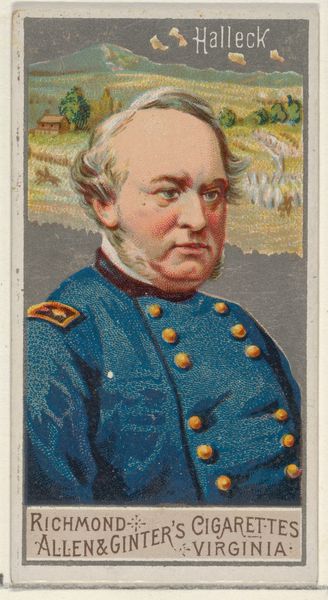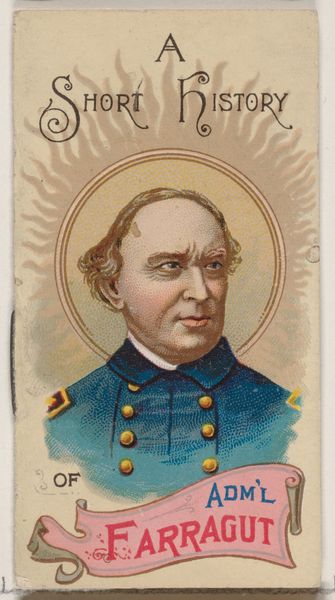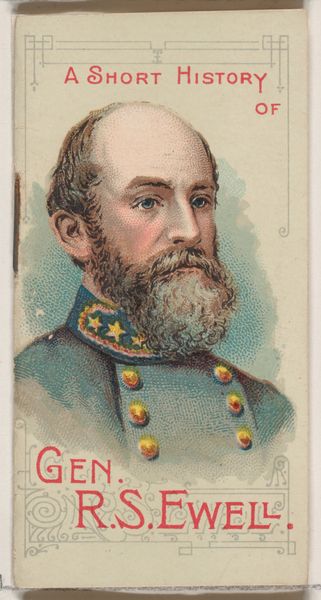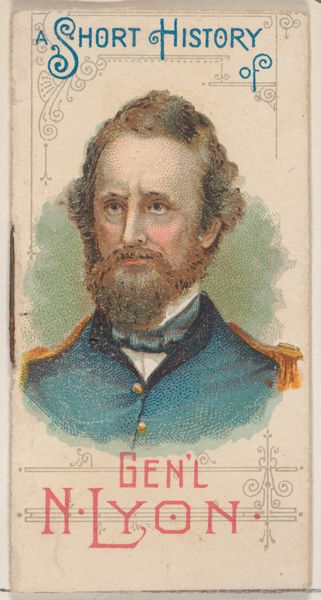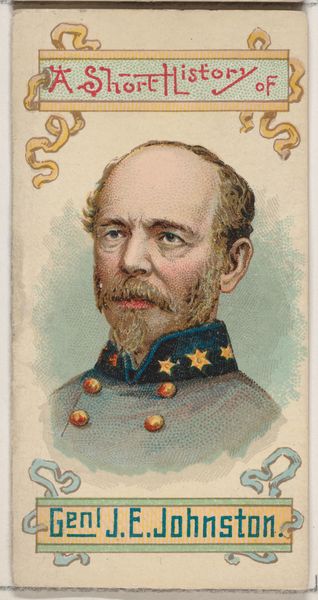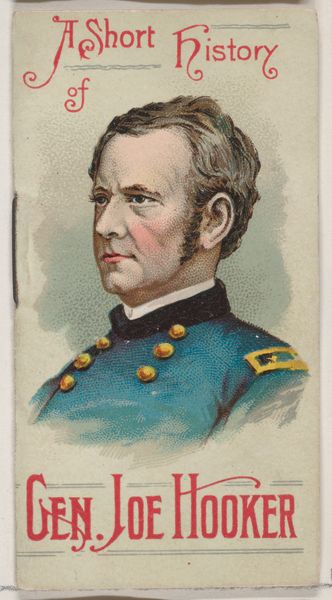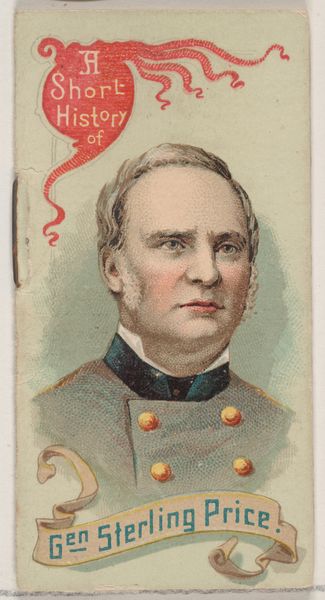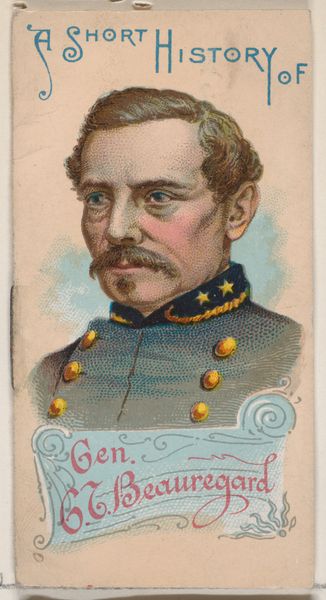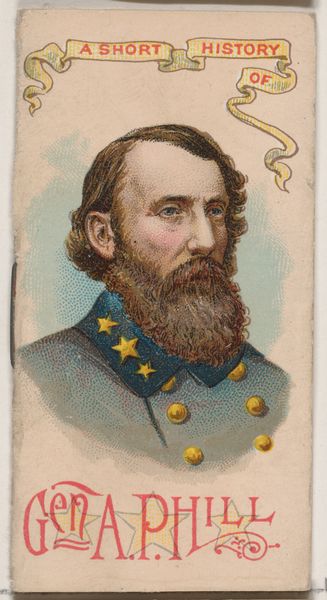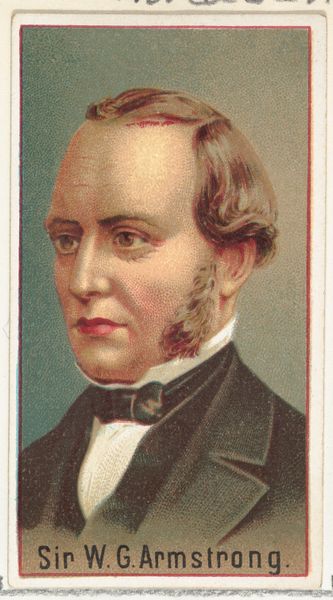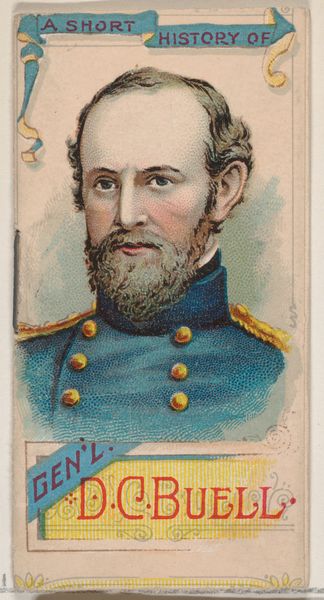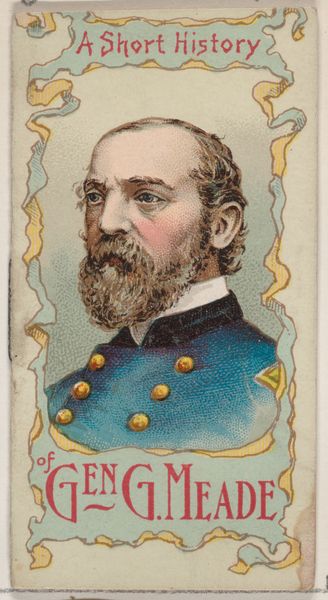
A Short History of General Henry W. Halleck, from the Histories of Generals series of booklets (N78) for Duke brand cigarettes 1888
0:00
0:00
drawing, coloured-pencil, print
#
portrait
#
drawing
#
coloured-pencil
# print
#
caricature
#
caricature
#
coloured pencil
Dimensions: Overall (Booklet closed): 2 3/4 × 1 1/2 in. (7 × 3.8 cm) Overall (Booklet open): 2 3/4 × 2 7/8 in. (7 × 7.3 cm)
Copyright: Public Domain
Editor: So, this is a printed drawing from 1888 of General Henry W. Halleck, featured in a series of booklets for Duke brand cigarettes. It's rendered with colored pencils and has a caricature-like quality to it. What stands out to you the most about this particular piece? Curator: As a materialist, my initial focus is on the conditions of its production. Consider the purpose of this artwork – it’s essentially advertising. A collectible premium item designed to be included with cigarettes. The consumption of tobacco and the popular fascination with historical figures, like General Halleck, are intrinsically linked. This tells us a great deal about late 19th-century society, doesn't it? How the cultural capital of military history was used to sell commodities? Editor: Absolutely! I hadn't considered that. So, it’s less about honoring the General and more about associating the Duke brand with prestige? Curator: Precisely! Think about the materials too – colored pencils and mass-produced prints. Not exactly high art materials. They speak to accessibility, widespread appeal, and disposability. The value wasn’t intrinsic, it was in its distribution and perceived collectibility as a ‘short history’. Does that reframe the caricature for you? Editor: It does! It's less about genuine artistic expression and more about a calculated marketing strategy, leveraging a historical figure. I never would have guessed. Thanks so much! Curator: It's been a pleasure. Always remember to examine the conditions and context surrounding a piece - the ‘how’ and ‘why’ it was made is as significant as ‘what’ it depicts.
Comments
No comments
Be the first to comment and join the conversation on the ultimate creative platform.
